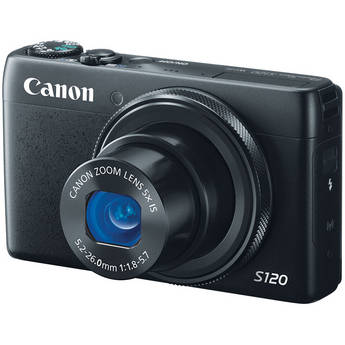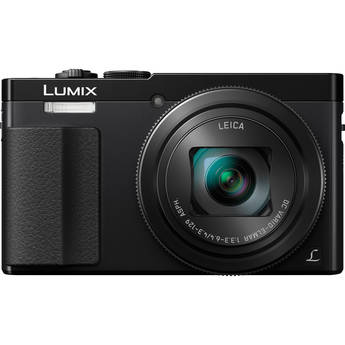- Photo Safaris
- Alaska Bears & Puffins World's best Alaskan Coastal Brown Bear photo experience. Small group size, idyllic location, deluxe lodging, and Puffins!
- Participant Guestbook & Testimonials Candid Feedback from our participants over the years from our photo safaris, tours and workshops. We don't think there is any better way to evaluate a possible trip or workshop than to find out what others thought.
- Custom Photo Tours, Safaris and Personal Instruction Over the years we've found that many of our clients & friends want to participate in one of our trips but the dates we've scheduled just don't work for them or they'd like a customized trip for their family or friends.
- Myanmar (Burma) Photo Tour Myanmar (Burma) Photo Tour December 2017 -- with Angkor Wat option
- Reviews Go hands-on
- Camera Reviews Hands-on with our favorite cameras
- Lens reviews Lenses tested
- Photo Accessories Reviews Reviews of useful Photo and Camera Accessories of interest to our readers
- Useful Tools & Gadgets Handy tools and gadgets we've found useful or essential in our work and want to share with you.
- What's In My Camera Bag The gear David Cardinal shoots with in the field and recommends, including bags and tools, and why
- Articles About photography
- Getting Started Some photography basics
- Travel photography lesson 1: Learning your camera Top skills you should learn before heading off on a trip
- Choosing a Colorspace Picking the right colorspace is essential for a proper workflow. We walk you through your options.
- Understanding Dynamic Range Understanding Dynamic Range
- Landscape Photography Tips from Yosemite Landscape Photography, It's All About Contrast
- Introduction to Shooting Raw Introduction to Raw Files and Raw Conversion by Dave Ryan
- Using Curves by Mike Russell Using Curves
- Copyright Registration Made Easy Copyright Registration Made Easy
- Guide to Image Resizing A Photographers' Guide to Image Resizing
- CCD Cleaning by Moose Peterson CCD Cleaning by Moose Peterson
- Profiling Your Printer Profiling Your Printer
- White Balance by Moose Peterson White Balance -- Are You RGB Savvy by Moose Peterson
- Photo Tips and Techniques Quick tips and pro tricks and techniques to rapidly improve your photography
- News Photo industry and related news and reviews from around the Internet, including from dpreview and CNET
- Getting Started Some photography basics
- Resources On the web
- My Camera Bag--What I Shoot With and Why The photo gear, travel equipment, clothing, bags and accessories that I shoot with and use and why.
- Datacolor Experts Blog Color gurus, including our own David Cardinal
- Amazon Affiliate Purchases made through this link help support our site and cost you absolutely nothing. Give it a try!
- Forums User to user
- Think Tank Photo Bags Intelligently designed photo bags that I love & rely on!
- Rent Lenses & Cameras Borrowlenses does a great job of providing timely services at a great price.
- Travel Insurance With the high cost of trips and possibility of medical issues abroad trip insurance is a must for peace of mind for overseas trips in particular.
- Moose Peterson's Site There isn't much that Moose doesn't know about nature and wildlife photography. You can't learn from anyone better.
- Journeys Unforgettable Africa Journeys Unforgettable -- Awesome African safari organizers. Let them know we sent you!
- Agoda International discounted hotel booking through Agoda
- Cardinal Photo Products on Zazzle A fun selection of great gift products made from a few of our favorite images.
- David Tobie's Gallery Innovative & creative art from the guy who knows more about color than nearly anyone else
- Galleries Our favorite images
Quick tip on when your next point and shoot should be a superzoom
Quick tip on when your next point and shoot should be a superzoom
Submitted by David Cardinal on Thu, 06/11/2015 - 12:25
 While smartphones have put a large dent in the compact camera market, tens of millions are still sold, and I often get asked about what features to look for when purchasing one. Headline numbers in ads often include not just resolution, but zoom range. Some models, like the Lumix DMC-ZS50 I'm currently testing, offer ranges up to 30:1 (effectively a 720mm telephoto lens at the long end). It is really tempting to think, "Wow! Why not get one that does that?" However, there are tradeoffs...
While smartphones have put a large dent in the compact camera market, tens of millions are still sold, and I often get asked about what features to look for when purchasing one. Headline numbers in ads often include not just resolution, but zoom range. Some models, like the Lumix DMC-ZS50 I'm currently testing, offer ranges up to 30:1 (effectively a 720mm telephoto lens at the long end). It is really tempting to think, "Wow! Why not get one that does that?" However, there are tradeoffs...
First, to get the optics for such a large zoom range small enough to work with a pocket-size camera, the sensor needs to be smaller (larger sensors require larger lenses). So, for example, the excellent Canon PowerShot S120, with 24-120mm zoom, has a 1/1.7-inch sensor, while the equivalent superzoom in the Canon line up, the Canon PowerShot SX280, has a significantly smaller 1/2.3-inch sensor to go with its much larger 20x (25-500mm) zoom range. It has about half the usable sensor area, which means that all other things being equal, it will have as much as twice the noise for any particular ISO.
 Second, the lens on a superzoom often has a smaller maximum aperture. The Canon PowerShot SX280, for example, has a relatively "slow" lens with a maximum aperture varying from f/3.5 to f/6.8. By comparison the Canon PowerShot S120 has a much wider aperture at its wide end, with a range from f/1.8 to f/5.7. The difference is more light for faster focusing, as well as the potential for higher shutters speeds for capturing action or shooting in low light.
Second, the lens on a superzoom often has a smaller maximum aperture. The Canon PowerShot SX280, for example, has a relatively "slow" lens with a maximum aperture varying from f/3.5 to f/6.8. By comparison the Canon PowerShot S120 has a much wider aperture at its wide end, with a range from f/1.8 to f/5.7. The difference is more light for faster focusing, as well as the potential for higher shutters speeds for capturing action or shooting in low light.
Finally, the combination of a smaller sensor, and trickier optics means that a superzoom will typically produce slightly softer images, with more distortion, than an equivalent camera with a more standard zoom range. So what do you get in exchange for all these sacrifices? ...
When you should buy a Superzoom
As with so many pieces of photo equipment, the answer to when you should buy it is if you need it. If you are hoping to take a point and shoot as your camera for an African safari, then you'll absolutely want the additional zoom range. I'll have more to report on this after I bring the Lumix DMC-ZS50 with me to Botswana later this month and give it a full field test. It has the same size sensor as the Canon superzoom, but is much newer so I expect it to be somewhat quicker and perhaps with improved image quality. More importantly, it also allows for the capture of Raw images. To make the most of the shots of a lifetime you might get on safari, the ability to post-process the Raw image can be a lifesaver.
Similarly, if you have other times you really need a very long focal length, and only want to purchase and carry a small camera, a Superzoom compact is the right choice. However, remember that the camera is going to focus fairly slowly at the long end, so don't count on it being the best way to get those magic photos of your kid making the winning catch 50 yards away on the football field, or that bobcat disappearing in the bushes at the end of your driveway. If you really expect to do a good job of action photography at a distance, you may need to move up to something beefier.
Sensor size chart for comparison

- Log in to post comments

